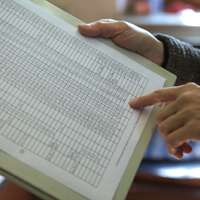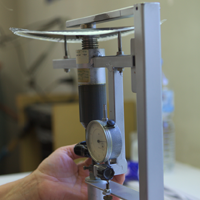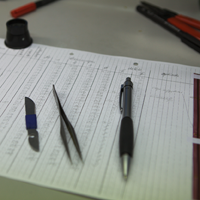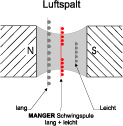No, due to the very strict mechanical tolerances of the Manger sound transducer the maximum permitted deviation in frequency range is 0.5dB. Stringent quality checks of each Manger sound transducer with its dedicated serial number are stored on its own measurement protocol since the beginning of development.



The Manger® sound transducer works with two voice coils which are electrically connected in parallel. These 2 coils lie adjacent to one another on a supporting frame. When one moves out of the air gap, an undesirable opposing force appears as a result of counter induction. This impairs the actual coil movement. However, as the second voice coil simultaneously moves into the magnetic field, the energy forces are neutralised and the opposing force is cancelled out. The voice coil is only moved time correctly by the music signal.
Using the patented twin voice coil principle, the Manger sound transducer achieves an extrememly fast rise time of 13µs. For lower frequencies i.e. with slower movements, these two adjacent coils act as one long voice coil and achieve a maximum excursion of +/-3.5mm.
The diaphragm does not move piston-like, as in cone loudspeakers, the flat diaphragm vibrates on its own axis. The bending waves move from the middle outwards, comparable to the wave movement on a water surface after throwing in a stone.

Using Mother Nature as as example, the Basilar diaphragm of the human inner ear functions along the same wave principle as the Manger sound transducer.


Experience Manger
The best way to get goosebumps is to experience a Manger system. We offer various ways:
Contact us
We love to hear from you, just simply choose the channel of choice to follow or contact us.






